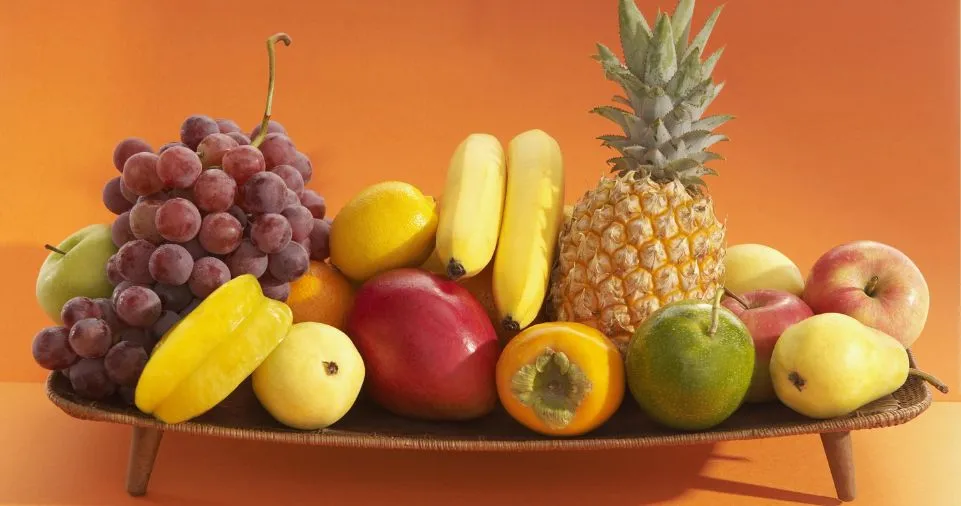Do you want to know about how baneficial peels are for your health?
You are at right place!
In this article, we will explore about nutrition with our piece on “wellhealthorganic.com: eat your peels: unlocking the nutritional benefits.”
Discover the unexpected health advantages of fruit and vegetable peels and why they are so crucial for your health. Let’s discover the wonder of peeling together!
What is “wellhealthorganic.com:eat your peels: unlocking the nutritional benefits”?
WellHealthOrganic.com is all about encouraging healthy eating habits and increasing the nutritional content of your meals.
In this article, ‘eat your peels: unlocking the nutritional benefits’, is a one-of-a-kind initiative that aims to emphasize the often-overlooked dietary value of fruit and vegetable peels.

Many individuals toss fruit and vegetable peels without realizing they contain vital vitamins, minerals, antioxidants, and fiber.
Consuming these peels not only reduces food waste but also provides your body with essential nutrients that may improve your general health and well-being.
Through this program, we want to educate and encourage people to recognize the nutritional value of peels and include them in their regular diets.
Incorporating peels into your meals is a practical and effective approach to enhancing your health organically, whether you wish to boost your immune system, improve digestion, or just add extra nutrients to your meals.
Join us as we peel back the layers and discover the nutritious advantages together!
Why is “wellhealthorganic.com:eat your peels: unlocking the nutritional benefits” Important?
Eating fruit and vegetable peels isn’t a fleeting fad; it’s a habit with considerable health and wellness advantages. Here’s why it’s crucial to recognize the nutritional value of peels:
Nutritional Value
- Fruit and vegetable peels include vital vitamins, minerals, antioxidants, and fiber.
- They include essential minerals such as vitamin C, potassium, magnesium, and quercetin.
- Consuming peels increases your total nutritional intake and promotes good health.
Reduced Food Waste
- Eating peels maximizes the use of every part of the fruit or vegetable, decreasing food waste.
- Food waste reduction is critical to long-term sustainability and environmental protection.
- Accepting peels promotes a more conscious and environmentally sustainable way of eating.
Enhanced Digestion
- The fiber in fruit and vegetable peels promotes healthy digestion and regular bowel motions.
- Eating peels may help you avoid constipation and support a healthy gut microbiota.
- Fiber-rich peels provide a sensation of fullness, which aids in weight control.
Immunosystem Support
- Peels include antioxidants, which help counteract oxidative stress and enhance the immune system.
- Consuming peels may lower your risk of chronic illnesses, including heart disease and cancer.
- Regular consumption of nutrient-dense peels improves overall immune function and vigor.
Versatility in cooking
- Peels may be used in a number of meals to enhance flavor, texture, and nutritional content.
- Peels may be used in a variety of dishes, including smoothies, salads, soups, and stir-fries.
- Experimenting with peels enables culinary imagination and the discovery of new flavors.
Cost-Effectiveness
- Eating peels helps you to increase the nutritious content of your meal at no added expense.
- It’s an inexpensive method to increase your nutritional intake and make the most of your shopping.
- Accepting peels may help you stretch your food budget while also promoting your health objectives.
“wellhealthorganic.com:eat your peels: unlocking the nutritional benefits” is significant because it encourages healthy eating habits, increases nutritional intake, improves digestive health, raises immune function, provides culinary flexibility, and is inexpensive.
By adding peels to your diet, you are not only feeding your body but also helping to create a healthy environment.
Also Read: What is CARTA (Continuous Adaptive Risk and Trust Assessment)?
Step-by-Step Guide: “wellhealthorganic.com:eat your peels: unlocking the nutritional benefits.”
- Understanding The Benefits: Begin by learning about the nutritional advantages of fruit and vegetable peels. Learn about the vitamins, minerals, antioxidants, and fiber in peels and how they may benefit your health.
- Choosing organic: Choose organic fruits and vegetables wherever possible to reduce your exposure to pesticides and toxins. Organic fruit often has fewer pesticide residues, making the peels safer to ingest.
- Washing thoroughly: Before ingesting peels, properly wash them to eliminate any dirt, debris, or pesticide residue. Scrub the peels with a produce brush or your hands under running water.
- Exploring Culinary Options: To experience new flavors and sensations, experiment with various fruits and vegetables, including their peels. Consider using peels in a number of recipes, such as smoothies, salads, soups, stir-fries, and baked goods.
- Using Citrus Zest: Remember the citrus zest! Using a zester or grater, add the zest of lemons, limes, oranges, or grapefruits to your recipes for a blast of flavor and scent without adding calories or salt.
- Embracing Creative Cooking Techniques: Explore inventive cooking ways for peels to boost your culinary creativity. Consider baking or grilling potato skins, sautéing carrot tops, or integrating watermelon rind into salads or pickles.
- Minimizing waste: When peeling fruits and vegetables, use a vegetable peeler or knife to remove just the topmost layer, preserving as much of the edible section as possible.
- Overcome Texture Challenges: Some peels may have a rougher or more fibrous texture, which may be unpleasant to some people. Try boiling or mixing these peels to soften them and make them more appealing to consume.
- Mixing and matching: Combine various fruits and vegetables, together with their peels, to make tasty and healthy meals and snacks that suit your taste. Mix and mix ingredients to create your flavor combinations.
- Enjoying the benefits: As you integrate fruit and vegetable peels into your diet, pay attention to how your body reacts. Fueling your body with these nutrient-dense meals may benefit digestion, energy levels, and general well-being.
By following this step-by-step instruction, you may get the nutritional advantages of fruit and vegetable peels while also improving your health organically. So, roll up your sleeves, get creative in the kitchen, and enjoy the benefits of peels now!
Advantages and Disadvantages of Wellhealthorganic.com:eat your peels: unlocking the nutritional benefits
Advantages of eating peels are:
| Title | Description |
| Nutritional Powerhouse | Contains essential vitamins, minerals, antioxidants, and fiber. Promotes general health and well-being. |
| Reduced Food Waste | Utilizes whole fruit or vegetables to save waste. Supports sustainability initiatives. |
| Improved Digestion | High fiber content encourages healthy digestion and regular bowel motions. Prevents constipation and promotes a healthy gut microbiota |
| Immune System Boost | Antioxidants enhance the immune system. Reduces the risk of chronic illnesses. Improves overall immunological function. |
| Culinary Versatility | Peels may be integrated into a broad range of meals to provide flavor and nutrients. Promotes culinary inventiveness and discovery. |
| Cost-Effective | Maximizes the nutritious value of food at no added expense. Budget-friendly approach to promoting health and fitness. |
Disadvantages of eating peels are:
| Title | Description |
| Pesticide Residues | Non-organic peels of fruits and vegetables may contain pesticide residues that might be dangerous. Consuming pesticide residues may pose health hazards. |
| Texture and Taste | Some peels could have a harsh or unpleasant flavor. The texture of particular peels may be less appealing. To enhance texture, you may need to heat or combine it. |
| Digestive Issues | Consuming excessive amounts of fiber-rich peels may induce digestive pain or gastrointestinal distress. |
| Limited Culinary Uses | Some peels have limited culinary applications and may only be acceptable for some meals. |
| Availability and Accessibility | Availability of various fruit and vegetable peels may be restricted based on the season and area. Not all peels may be simply available or reachable. |
| Individual Preferences: | Individual tastes may differ, and some individuals may just choose not to eat certain peels. Personal taste preferences may influence the desire to integrate peels into the diet. Understanding the benefits and drawbacks of eating fruit and vegetable peels allows you to make more educated choices about how to include them in your diet to benefit your health and well-being. |
Bonus points
- Try DIY Fruit and Vegetable Chips: Baking or air-frying leftover peels yields crispy chips that are delicious treats. Season with your favorite herbs and spices for extra flavor.
- Make Homemade Broth or Stock: Save vegetable peels, such as carrot tops, onion skins, and celery ends, to prepare your nutrient-dense soup or stock. Simmer peels in water with herbs and spices to create a delicious foundation for soups, stews, and sauces.
- Create Natural Cleaning Solutions: Use citrus peels, such as lemon or orange zest, to make your cleaning solutions. Infuse vinegar with citrus peels to create a natural cleanser that can cut through oil and dirt.
- Compost Leftover Peels: If you have a backyard compost bin or access to a community composting program, think about composting leftover fruit and vegetable peels. Composting reduces trash and produces nutrient-dense soil for gardening.
- Share Your Peeling Tips and Recipes: Share your favorite peeling techniques, recipes, and inventive applications for fruit and vegetable peels with your friends, family, and online groups. Inspire people to appreciate peels’ nutritious advantages and work together to eliminate food waste.
- Host a Peel-Packed Potluck: Organize a potluck meal or cooking party with friends, and push each other to make dishes using fruit and vegetable peels. Get creative and see who can create the most tasty and innovative peel-based cuisine.
- Support Local Farmers and Markets: Buy fruits and vegetables, particularly those with edible peels, from local farmers’ markets or via community-supported agriculture (CSA) programs. Supporting local producers encourages sustainable agricultural techniques and results in fresher, more delicious products.
- Start a Peel-Saving Challenge: Encourage friends, family, and colleagues to participate in a peel-saving challenge. Participants should integrate fruit and vegetable peels into their meals for a certain amount of time, sharing their experiences and recipes along the way.
- Learn About Traditional Uses of Peels: Discover traditional cuisines and civilizations that use fruit and vegetable peels in their preparation. From citrus zest in Mediterranean recipes to pickled watermelon rind in Southern cooking, there are several culinary traditions to learn.
- Get Creative with Garnishes: Fruit and vegetable peels make great ornamental garnishes for drinks, desserts, and savory foods. Citrus twists, cucumber ribbons, and carrot curls may enhance the appearance and flavor of your culinary creations. I am frequently asked.
Also Read: 5 Surprising Benefits of Using Hydro Excavation for Construction Projects
Conclusion
Including fruit and vegetable peels in your diet is a wise decision for both your health and the environment.
These nutrient-dense outer layers provide a variety of advantages, ranging from increased nutritional intake to reduced food waste.
While certain factors, such as pesticide residues and personal taste preferences, must be considered, the benefits significantly exceed the disadvantages.
So, don’t be afraid to add peels to your meals and snacks—it’s a simple yet powerful method to improve your health while also helping the environment. Let us peel back the layers and savor the sweetness together!
Frequently Asked Questions (FAQ):
Q: Are fruit and vegetable peels safe to consume?
A: Yes, fruit and vegetable peels are typically acceptable to consume as long as they are well-cleaned to eliminate any dirt, debris, or pesticide residues. Choosing organic products may further reduce your exposure to pesticides.
Q: What are the advantages of consuming fruit and vegetable peels?
A: Eating peels may help you get more nutrients, improve your digestive health, strengthen your immune system, and decrease food waste. Peels are high in essential vitamins, minerals, antioxidants, and fiber, making them a nutritious addition to your diet.
Q: Can eating peels minimize food waste?
A: Absolutely! By adding peels to your dishes, you are using whole fruit or vegetables, reducing waste, and promoting sustainability. This benefits your health and the environment.
Q: How do I add peels to my diet?
A: Peels can be used in several recipes, including smoothies, salads, soups, stir-fries, and baked goods. Experiment with various fruits and veggies to find new flavor combinations.
Q: Are there any peels that I should avoid eating?
A: While most fruit and vegetable peels are safe to consume, it’s essential to be aware of any pesticide residues, particularly on non-organic produce. Furthermore, certain peels may have a rough or bitter flavor, which may appeal to only some.
Q: Can I eat peels even if I have dietary restrictions or allergies?
A: If you have dietary limitations or allergies, you should contact a healthcare expert before introducing new items to your diet, such as fruit and vegetable peels. They may provide personalized advice based on your requirements and interests.
Q: How should I wash the peels before eating them?
A: To ensure that peels are clean and safe to consume, carefully wash them under running water and scrub gently with a produce brush or your fingers. This helps to remove any dirt, debris, or pesticide residues that may be on the surface.
Q: Can I eat peels from any sort of fruit or vegetable?
A: While many fruits and vegetables have edible peels, some may be more appealing or appropriate for consumption than others. Experiment with numerous types to see which ones you prefer and are comfortable putting into your diet.
Q: Are there any cooking methods for improving the texture of peels?
A: Yes, boiling or blending particular peels may enhance their texture and make them more appealing to consume. Baking or grilling potato skins, for example, softens them, but blending harder peels into smoothies results in a smoother consistency.
Q: How can I ensure that I am receiving the most significant nutritional value from peels?
A: To maximize the nutritional value of peels, choose a variety of fruits and vegetables and regularly include their peels in your meals. Remember to carefully wash peels before consuming them as part of a balanced diet.


